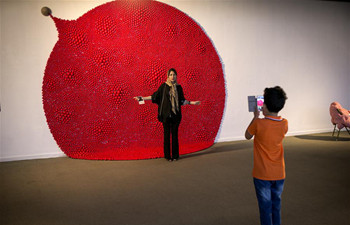by Matt Goss
CANBERRA, Sept. 19 (Xinhua) -- Funding from a Hong Kong-based charitable organization will allow Australian scientists to study how new technology can improve outcomes for gastrointestinal (GI) cancer patients.
Sean Grimmond and Alex Boussioutas, researchers from the Center for Cancer Research at the University of Melbourne, were granted 3 million U.S. dollars by the Li Ka Shing Foundation to research how genome sequencing can be used in diagnosing and treating upper-GI cancers.
Upper-GI cancers include cancers of the pancreas, stomach and esophagus. Gastric cancer is particularly prominent in Asia while pancreatic cancer is the third most common cause of cancer-related death in the United States.
Grimmond, director of the Center for Cancer Research, said that genome sequencing, the process by which the DNA sequence of an organism can be determined, could change the way cancer is treated.
He said that the International Cancer Genome Consortium (ICGC) is working to establish a database of whole genetic sequences from 25,000 cancer patients with 50 types of cancer.
"The next step is seeing how we can use genome readouts to give us better insights into a patient's outcome: can we make decisions on improving cancer treatment based on the readouts," Grimmond told Xinhua on Tuesday.
"We also want to understand the oncogenic switch in upper-GI cancers that causes a pre-malignant lesion to become a tumour that grows out of control.
"It could change everything from the diagnosis of a cancer to the treatment."
He said that the cost of undertaking sequencing was becoming more affordable every year to the point where having genes sequenced could be commonplace within five years.
"When the first Australian cancer patient was sequenced, it was in 2010 as part of a big international initiative, it cost us all up about (800,000 U.S. dollars) and 40 people worked on that project," Grimmond said.
"At that stage that team could do maybe four patients a year.
"We're now at a stage where the technology allows us to do 3,000 patients a year at several thousand dollars per patient with a much smaller team.
"Within five years we should be looking at a price point between an x-ray and Magnetic Resonance Imaging (MRI)."
The team from the cancer research center had been interested in studying upper-GI cancers for years, Grimmond said, when the Li Ka Shing Foundation made it known that it was interested in funding research on the subject.
"We think this is a fantastic opportunity for us," he said.
"(The Li Ka Shing Foundation) recognized the potential of this center as a great opportunity to drive this field."

















